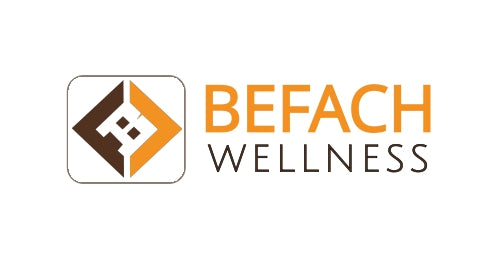
Understanding Glycemic Load vs. Glycemic Index: What's the Difference?
Share
When discussing how food affects blood sugar, two terms often come up: Glycemic Index (GI) and Glycemic Load (GL). While both are related to carbohydrate quality and blood sugar response, they provide different information. Understanding the distinction between GI and GL is crucial for making truly informed dietary choices. This guide from Befach Wellness clarifies the difference between Glycemic Load and Glycemic Index.
A Quick Recap: What is the Glycemic Index (GI)?
The Glycemic Index ranks foods based on how quickly they raise blood sugar levels after consumption compared to pure glucose. It's a measure of the *quality* of the carbohydrate in a food.
- High GI: Rapid blood sugar rise
- Low GI: Slow and steady blood sugar rise
However, the GI value is based on a fixed amount of carbohydrate (typically 50 grams) of the tested food, which doesn't always reflect realistic serving sizes.
Introducing the Glycemic Load (GL)
The Glycemic Load is a more comprehensive measure because it considers both the *quality* and *quantity* of carbohydrate in a typical serving of food. It tells you how much a specific serving of a food is likely to increase your blood sugar level. Glycemic Load is calculated using the following formula:
$$ \text{GL} = \frac{\text{GI} \times \text{Amount of available carbohydrates (in grams) in a serving}}{100} $$GL values are categorized as:
- High GL (20 or more): Likely to cause a significant rise in blood sugar.
- Medium GL (11-19): Likely to cause a moderate rise in blood sugar.
- Low GL (10 or less): Likely to cause a slow and steady rise in blood sugar.
Glycemic Index vs. Glycemic Load: The Key Difference
The fundamental difference lies in the **serving size**. The GI tells you how quickly the carbohydrate in a food is converted to glucose, regardless of how much you eat. The GL tells you how much a specific serving of that food will raise your blood sugar, taking into account both the speed of conversion (GI) and the amount of carbohydrate in that serving.
Think of it this way:
- GI: How fast does this car go? (Potential speed)
- GL: How far will this car go with the amount of fuel in the tank? (Actual impact)
Why Glycemic Load Provides a More Complete Picture
Considering GL along with GI offers a more practical approach to managing blood sugar because it accounts for real-world eating habits. For example:
- Watermelon has a relatively high GI (around 80), but a typical serving contains a relatively low amount of carbohydrates. Therefore, its GL is low (around 4-5), meaning a standard portion won't cause a significant blood sugar spike.
- On the other hand, a small amount of a low-GI food consumed in a very large portion could still result in a high GL and a significant blood sugar response due to the sheer quantity of carbohydrates.
Focusing on foods with both a low GI and a low GL is generally the most effective strategy for consistent blood sugar control.
Utilizing GI and GL for Healthier Choices
Both GI and GL are valuable tools. Here's how to use them:
- Use GI as a General Guide: Use the Glycemic Index to understand the inherent quality of carbohydrates in different food categories (e.g., most vegetables are low GI, most refined grains are high GI). Prioritize foods that are naturally lower on the GI scale.
- Use GL for Portion Control: Consider the Glycemic Load when determining appropriate serving sizes, especially for foods with a higher GI. A smaller portion of a higher GI food will have a lower GL.
- Focus on the Overall Diet: Remember that the GI and GL of a meal can be influenced by combining foods. Pairing a higher GI food with protein, fiber, or healthy fats can lower the overall GL of the meal.
Resources like glycemicindex.com provide both GI and GL values for many foods. Organizations focused on diabetes, such as those providing information on blood sugar management, often discuss both concepts. The National Institute of Diabetes and Digestive and Kidney Diseases (NIDDK) is one such resource.
Making Informed Food Choices with Befach Wellness
At Befach Wellness, we understand the importance of managing blood sugar through diet. Our products are designed with your health in mind. Our Fortified Low GI Rice, for instance, is specifically formulated to have a low Glycemic Index, which in turn contributes to a low Glycemic Load when consumed in typical serving sizes. This makes it an excellent choice for individuals looking to manage their blood sugar and incorporate healthy carbohydrates into their diet. Explore our full range of wellness products.
Conclusion: Two Tools for Better Blood Sugar Management
While often confused, Glycemic Index and Glycemic Load are distinct but complementary tools for understanding how food impacts blood sugar. The GI provides insight into the quality of the carbohydrate, while the GL offers a more practical measure based on typical serving sizes. By considering both, you can make more informed food choices that contribute to stable blood sugar levels, improved energy, and better overall health. Let Befach Wellness support your dietary goals with products designed for your well-being.
Have questions about GI, GL, or our low-GI products? Contact Befach Wellness today!
